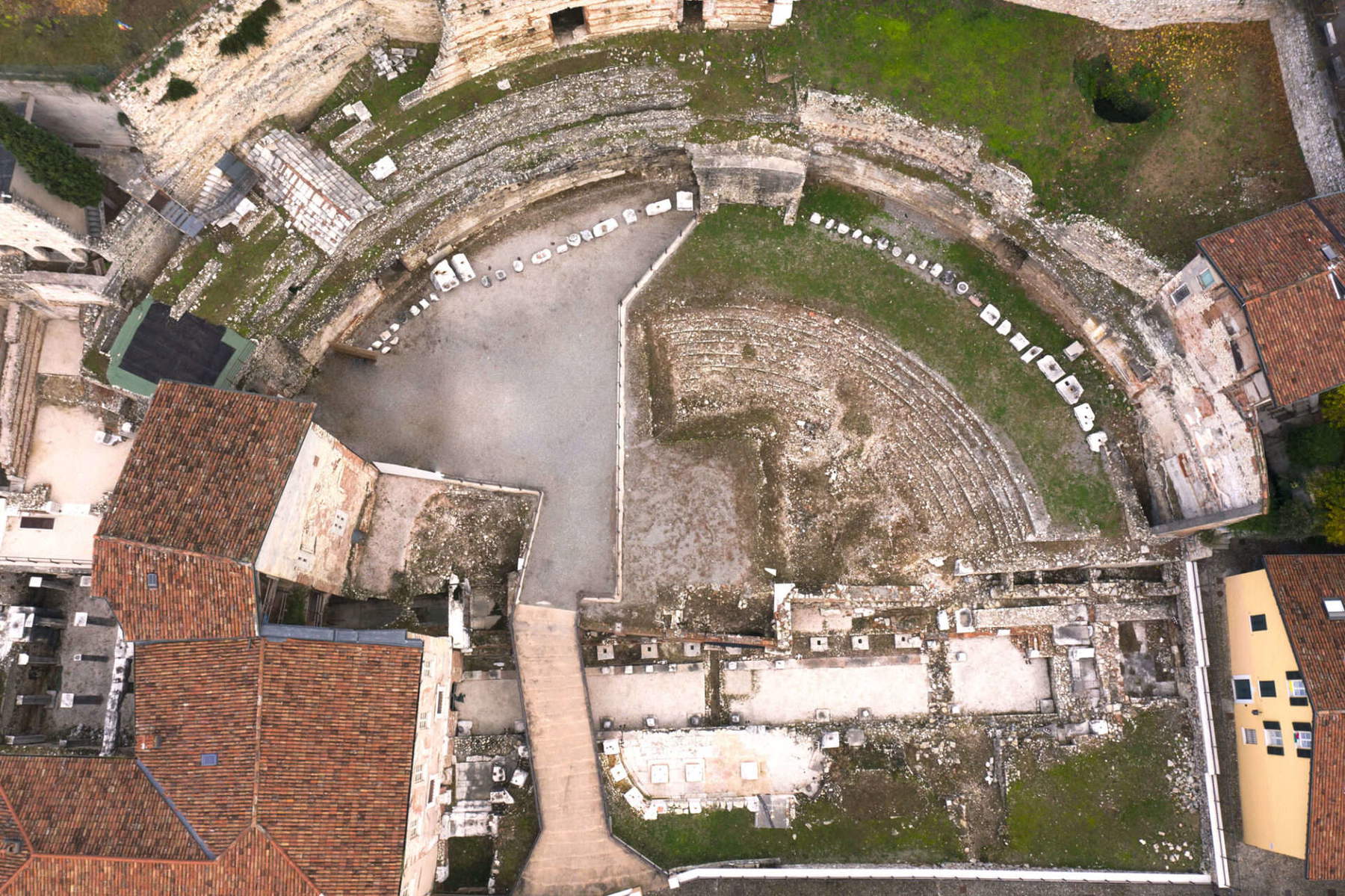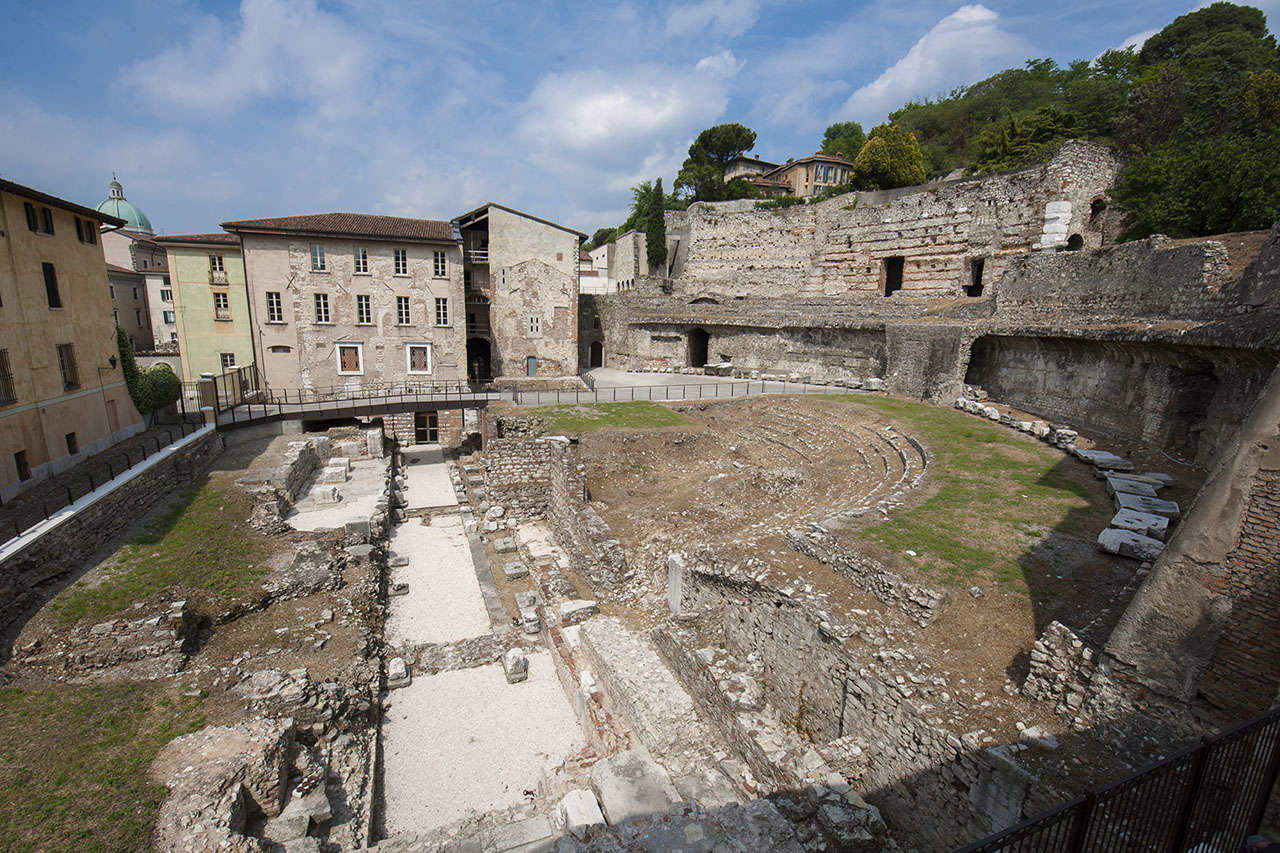As of July 7, the ancient heart of Brescia is back in the spotlight with the start of a major new round of archaeological excavations involving the Roman theater, an integral part of the large Capitolium-foro-theater archaeological complex. The operation, promoted and directed by the Soprintendenza Archeologia, Belle Arti e Paesaggio for the provinces of Bergamo and Brescia, also involves the Municipality of Brescia and the Brescia Musei Foundation, with a work agenda that aims to fully recover one of the city’s most significant historical sites.
The area will be temporarily inaccessible to the public from July 7 to July 30 to allow the first excavation operations to begin. However, it will be fully reopened and open to visitors in August, from the 1st to the 31st, and then will be inaccessible again on weekdays from September 1, when the construction site will come into full swing, focusing on the entire eastern sector of the theater. On weekends and holidays, the public will instead be able to access the area and have a direct and immersive experience in the excavation site.

The intervention is part of a broader plan for the protection and enhancement of Brescia’s archaeological heritage, initiated during the 20th century and now relaunched with a modern and participatory vision. The goal is to return to the city a site of extraordinary historical importance, which for more than a thousand years was the fulcrum of public life, from Roman Brescia to later eras, up to the communal age, when the area was used for civic assemblies.
The scientific direction of the project is entrusted to archaeologist Serena Solano, a Soprintendenza official, and benefits from funding from the Ministry of Culture. Joining in support of the initiative are the Municipality of Brescia and the Brescia Musei Foundation, the latter of which is also in charge of operational management of the site and the organization of public tours during the entire construction period.
The Roman theater, part of the UNESCO World Heritage archaeological complex along with the Capitolium and the Museum of Santa Giulia, will thus be at the center of an integrated cultural strategy. The site will continue to be open to the public, with some limitations due to the presence of the construction site. The Republican Sanctuary and the Capitolium Temple, with their respective artifacts, will remain accessible at all times during the usual visiting hours: Tuesday through Sunday, 10 a.m. to 7 p.m. until September 30, and thereafter, 10 a.m. to 6 p.m. from October 1.
Fondazione Brescia Musei will ensure smooth access to the archaeological site, with the exception of areas directly involved in excavation operations. The visitor experience will be enriched by innovative public archaeology and educational tours, which will accompany citizens and tourists to discover the new findings and the cultural significance of the Roman theater.

Starting in September 2025 and running until March 2026, the Superintendency and the Brescia Musei Foundation will also introduce new ways of communicating and sharing archaeological work, opening the doors of the site on holidays and weekends. Guided tours, informative moments and educational activities will be organized that will allow the public to better understand the original functions of the theater and the progressive results of the excavation.
This operation represents a virtuous example of “public archaeology,” in which the community actively participates in the process of learning about and rediscovering its heritage. Visitors will thus be able to observe live the progress of the work and contribute to an open dialogue between past and present, between scientific research and urban culture.
The current excavations are made possible thanks to the preliminary investigations conducted by the Superintendence in recent months, which followed the unearthing and restoration of the ima cavea during 2023. This work represents a fundamental step toward understanding the original structure of the theater and is a preparatory element to the subsequent architectural restoration and design of new ways of using the area.
The re-functionalization project, outlined by renowned British architect David Chipperfield, envisions a contemporary vision of the site that stands in continuity with its millennia-old function as a public and cultural space. The restoration of the archaeological structures, planned at the end of the excavation campaign in 2026, will be the natural continuation of a carefully and methodically initiated journey.
This phase of intervention is not only a scientific and cultural achievement, but also an act of restitution to the city and its community, which has always shown attention and sensitivity to the rediscovery of its past. In fact, the entire enhancement process is part of the broader strategy of the city administration, which has been able to leverage the title of Italian Capital of Culture 2023 to attract resources, planning and international visibility.
An example of this is the candidacy and awarding of the restoration and re-functionalization of the Roman theater of Brixia and Palazzo Maggi Gambara, as part of the call for major emblems 2024 promoted by Fondazione Cariplo. This project represents the natural evolution of the work started with the intention of making the Roman theater the point of reference for the cultural development of the city and its districts.
 |
| Archaeological excavations return to the heart of Brescia: Roman theater prepares for new life |
Warning: the translation into English of the original Italian article was created using automatic tools. We undertake to review all articles, but we do not guarantee the total absence of inaccuracies in the translation due to the program. You can find the original by clicking on the ITA button. If you find any mistake,please contact us.